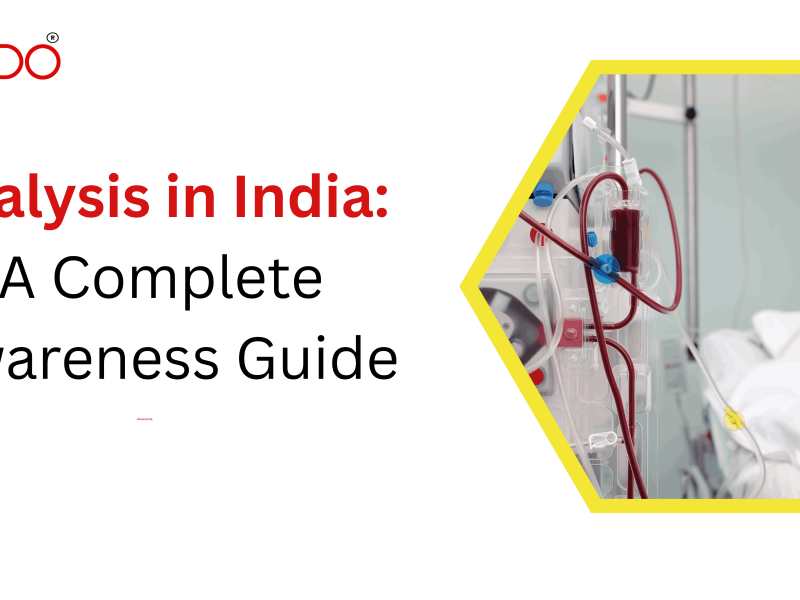Caring for a loved one with a tracheostomy can feel overwhelming—especially when you’re responsible for delicate procedures like suctioning at home. Whether you’re a caregiver, family member, or patient yourself, understanding how to safely manage tracheostomy suctioning is crucial to ensuring comfort, preventing complications, and maintaining clear airways.
While hospitals offer the advantage of trained professionals, many patients require continued care after discharge right at home. This is where knowing how to perform tracheostomy suctioning at home becomes not just useful, but often lifesaving.
In this comprehensive guide, we’ll walk you through everything you need to know: when to suction, what equipment is needed, a step-by-step process, common signs of complications, and professional support options like VMEDO’s home care services. With the right information, preparation, and support, you can confidently manage tracheostomy care from the comfort and safety of your home.
What Is Tracheostomy Suctioning?
Tracheostomy suctioning is a medical procedure that involves inserting a suction catheter into the tracheostomy tube to remove accumulated mucus, secretions, and other debris. This is necessary because a person with a tracheostomy may have a reduced ability to cough or clear their own airway.
Why Is Suctioning Important?
Regular tracheostomy suctioning helps:
-
Maintain a clear airway
-
Prevent respiratory infections
-
Reduce the risk of blockages or breathing difficulties
-
Promote better oxygen flow
-
Improve overall comfort and breathing for the patient
When Is Suctioning Needed?
Suctioning is not done on a fixed schedule but as needed. Some signs that indicate the need for suctioning include:
-
Gurgling or rattling sounds when breathing
-
Visible mucus in the tracheostomy tube
-
Difficulty breathing
-
Decreased oxygen saturation (if monitoring SpO₂)
-
Restlessness, agitation, or increased heart rate
-
Cyanosis (bluish skin or lips)
-
Coughing or choking
Who Can Perform Tracheostomy Suction at Home?
Tracheostomy suctioning at home can be performed by:
-
Trained caregivers
-
Family members after professional training
-
The patient themselves in select cases (if medically stable and trained)
-
Home healthcare nurses or technicians
It is strongly recommended to get trained by a doctor, nurse, or home healthcare provider before attempting suctioning independently.
Equipment Required for Tracheostomy Suction
Here’s what you’ll need:
-
Suction machine (portable/electric)
-
Suction catheter (sterile, correct size)
-
Sterile gloves
-
Normal saline (optional, to loosen thick mucus)
-
Sterile water (to rinse catheter)
-
Connecting tubing
-
Gauze pads or tissues
-
Waste container
-
Pulse oximeter (optional, to monitor oxygen)
Step-by-Step Guide to Tracheostomy Suction at Home
Follow these steps for a safe suctioning procedure:
1: Wash Your Hands
-
Wash thoroughly with soap and water for at least 20 seconds.
-
Dry hands using a clean towel or disposable tissue.
2: Prepare the Equipment
-
Place all supplies on a clean surface.
-
Connect the suction catheter to the suction machine via the connecting tubing.
-
Set the suction pressure:
-
Adults: 100–150 mmHg
-
Children: 100–120 mmHg
-
Infants: 80–100 mmHg
-
3: Position the Patient
-
Have the patient sit upright or in a semi-Fowler’s position (45°).
-
Ensure adequate lighting for visibility.
4: Wear Sterile Gloves
-
Put on gloves to prevent introducing infections.
-
Open sterile catheter packaging carefully.
5: Test the Suction Machine
-
Turn on the machine and test it by suctioning some sterile water.
-
This ensures everything is working and clears the tubing.
6: Insert the Suction Catheter
-
Do not apply suction while inserting the catheter.
-
Gently insert the catheter into the tracheostomy tube until resistance is felt (about 10–15 cm in adults).
7: Apply Suction While Withdrawing
-
Cover the thumb port to apply suction.
-
Withdraw the catheter slowly while rotating it.
-
Limit suctioning to 10–15 seconds at a time to prevent oxygen deprivation.
8: Rinse the Catheter (Optional)
-
If multiple suction passes are required, rinse the catheter in sterile water between uses.
9: Monitor Patient
-
Watch for signs of breathing improvement.
-
Check oxygen saturation if a pulse oximeter is available.
10: Clean Up
-
Dispose of the catheter in a medical waste bin.
-
Turn off the suction machine.
-
Wash hands again.
Tips for Safe and Effective Suctioning
-
Avoid suctioning more than 3 times in a single session unless necessary.
-
Allow the patient to rest between suction passes.
-
Use humidification if mucus is thick or sticky.
-
Maintain hydration for thinner secretions.
-
Replace disposable parts regularly.
-
Suction before meals, not after, to prevent vomiting.
Signs of Complications
Contact a healthcare provider immediately if you notice:
-
Bleeding from the tracheostomy site
-
Thick, green, or foul-smelling secretions (sign of infection)
-
Persistent coughing or gagging
-
Severe difficulty in breathing despite suction
-
Skin around the tube turning red, swollen, or painful
-
Sudden drop in oxygen levels
When to Call a Doctor
You should call your doctor or healthcare provider if:
-
Suctioning becomes frequent (more than every hour)
-
The patient shows signs of fever or chest infection
-
There is blood in the mucus
-
The tracheostomy tube becomes dislodged or blocked
-
The patient has trouble breathing after suctioning
How VMEDO Can Help with Tracheostomy Care at Home
At VMEDO, we understand how important it is to manage tracheostomy care in the comfort of your home. Our team of trained and certified healthcare professionals can assist you with:
-
Tracheostomy suctioning at home
-
Tube replacement and maintenance
-
Infection prevention and wound care
-
Training for caregivers and family members
-
24/7 on-call support for emergencies
Whether it’s a one-time need or regular tracheostomy care, VMEDO ensures safe, professional, and compassionate service right at your doorstep.
Conclusion
Tracheostomy suctioning at home may seem daunting at first, but with the right knowledge, tools, and training, it becomes a manageable and essential part of day-to-day care. Keeping the airway clear not only ensures comfort and proper breathing but also reduces the risk of infections and other complications.
Remember, cleanliness, attentiveness, and a calm approach are key to successful suctioning. While family members and caregivers can often perform suctioning after proper guidance, it’s important to recognize your limits and seek professional help when needed.
At VMEDO, we’re here to support you at every step. Whether you need trained nurses for regular suctioning, emergency tracheostomy care, or guidance for home-based recovery, our expert medical team is just a call away.
You don’t have to do it alone—let VMEDO help you provide safe, compassionate, and effective Tracheostomy care at Home in Bangalore.



